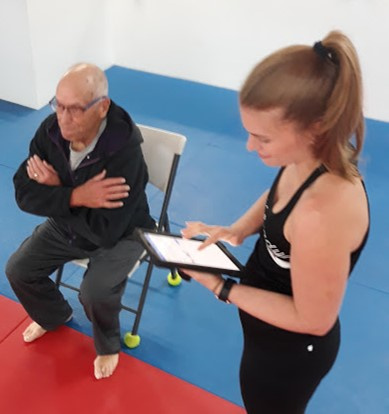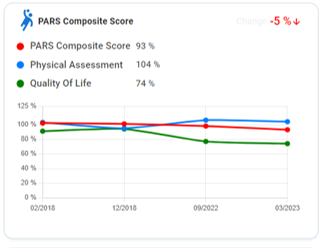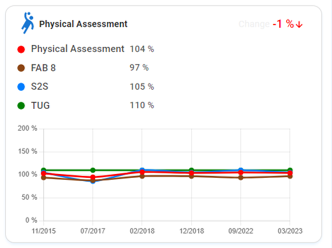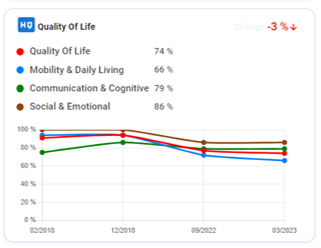Insights: Apprehending the true nature through intuitive understanding. An understanding of relationships that sheds light on what it means or why it is important.
Timing a fighter on the standing balance for 30 seconds is easy. Guiding fighters in the standing jump is fun. Timing the TUG? Counting stands in the Sit-to-Stand? Easy. But, what does it all mean? So what? PARS Insights have the answer.
Trends: Parkinson's is a slow progressive disease. The only way to accurately know whether you are losing ground, staying eve (winning) or even improving is through regular assessments and being able to compare them to previous assessments. PARS plots your assessment results on a graph so you can see how your fighter is doing over time. In the physical assessment graph below, PARS show the fighter's trend from 2015 through 2023!
PARS analyzes the raw data to tell you what it all means in easy-to-understand-and-explain graphs.
|
PARS collects data points from
- The fighter's general information such as height, gender, age, time since diagnosis, intensity, weight and more,
- The fighter's personal Parkinson's Profile of symptoms,
- The fighter's PDQ quality of life questionnaire,
- The Fullerton 8 balance tests,
- The Timed-Up-and-Go,
- The 30-Second Sit-to-Stand, and,
- Coach observations.
|
 |
|
Composite physical and quality of life graph.
PARS computes a composite physical and quality of life score along with their actual physical and quality of life scores.
- The composite number is a good reflection of a fighter's general condition. A coach gets an instant understand between a person with a composite score of 92 versus a 62.
- A high physical score and a low quality of life score might indicate anger, frustration, fear or other emotional reaction to their disease.
- A high quality of life score wit a lower physical score might indicate a fighter in denial, not taking their disease seriously.
|
 |
|
Physical Assessment Insights & Trends
PARS graphs the FAB-8 score plus the fighter's TUG & Sit-to-Stand score into a physical Assessment composite score and graphs it over time. In the example to the right, note that it goes back to 2015 and includes 7 assessment periods. Also, note that after more than 7 years, this fighter is basically even. EiW! Even is Winning!
|
 |
|
The PDQ tie you up in knots? Don't know how to read it? Don't know how to explain what it means to your fighter? Rather not use it? Don't use it?
PARS understands the PDQ! In the graph to the right, PARS shows an overall quality of life score plus scores for
- Mobility and Daily Living,
- Communication and Cognitive, and,
- Social and Emotional.
And show the trends over time. How is this fighter doing after 5 years? The PDQ isn't so confusing after all! |
 |
.